It takes between one and ten days to get into ketosis if you stick to the ketogenic diet and do it properly.
The exact time it takes to get into ketosis depends on prior nutrition, the individual’s metabolism, and other factors such as supplements and fasting.
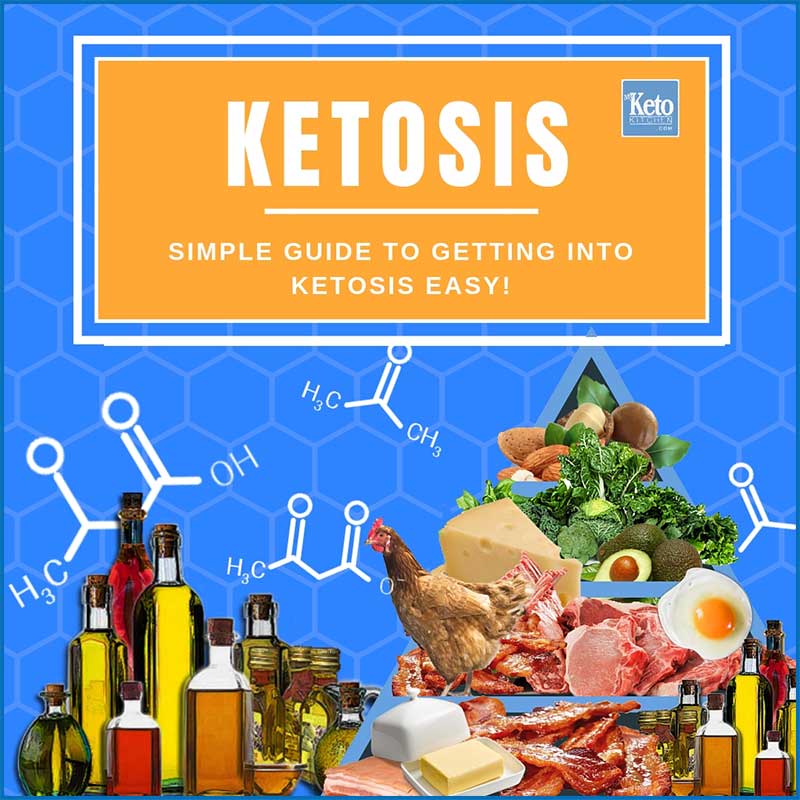
It’s impossible to tell with pinpoint accuracy how long it will take to get into ketosis, but we can get within the ballpark.
Don’t fear below, we have plenty of tips to make ketosis kick in quickly!
Getting into ketosis is what makes the ketogenic diet “keto” in the first place. Ketosis happens when you increase blood ketone levels through high-fat and low-carb eating.
Ketosis supercharges your body to be in an optimal fat-burning zone but not only that.
Being in ketosis gives you lasting, sustained energy, enhanced cognition, improved focus, and other neuroprotective benefits. As well as the coveted weight loss benefits of ketosis.
The Health Benefits Of Being In Ketosis
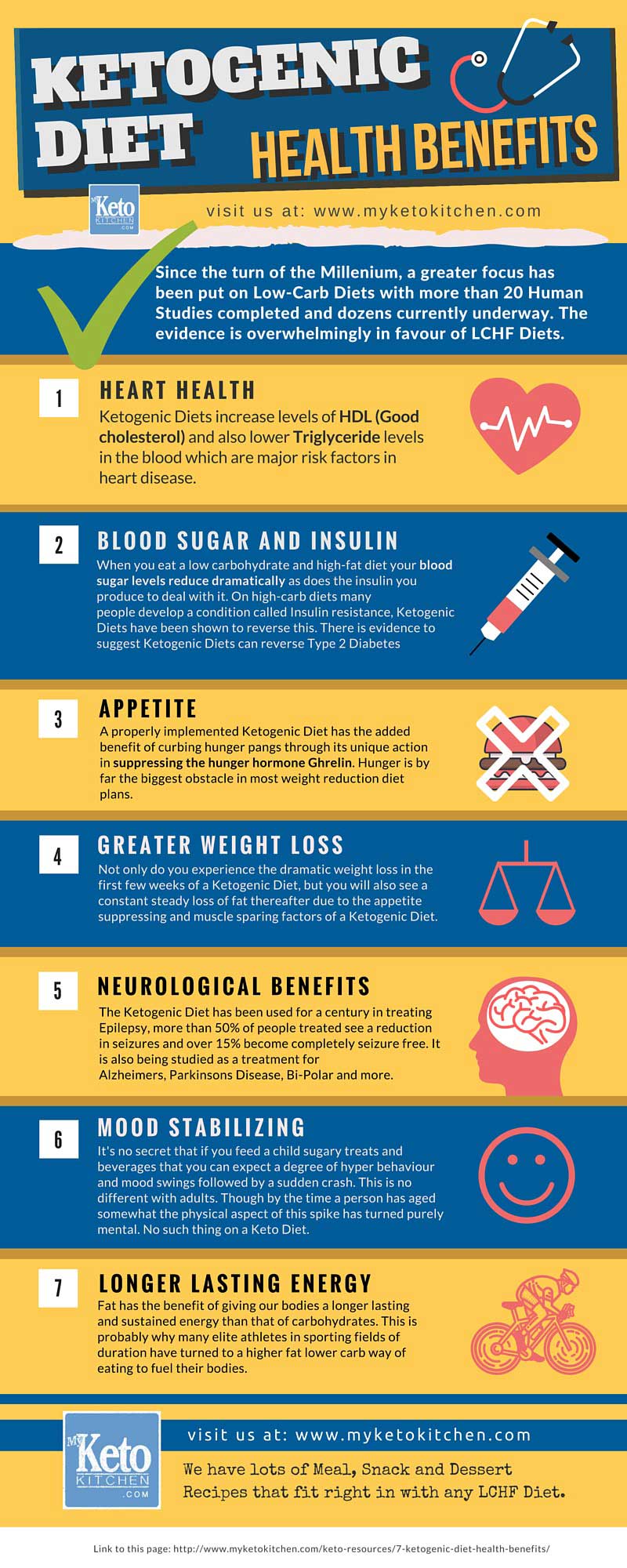
Being on the Ketogenic Diet and having your body rely on fats as fuel through ketosis comes with cardiovascular benefits as well as weight loss.
The Benefits of Ketosis:
- Research shows that ketosis lowers bad LDL cholesterol while increasing good HDL cholesterol.
- Ketosis decreases a person’s risk of heart disease
- Research has shown that ketosis improves insulin resistance
- There are also studies into the effects of Ketogenic Diets’ effects on Alzheimer’s Disease and Bipolar Disorder (among others) that have shown promising results.
- The Ketogenic Diet itself was used in the early 1900s to control epileptic seizures. It is still used today for those resistant to seizure medication. But we won’t dive deeply into all of that today.
- Ketosis helps turn your body from burning carbs as fuel to burning fat, which results in fat loss.
- Ketosis has cognitive benefits, improving mood, focus, and general well-being.
The main reason it takes some people longer to get into ketosis is that we all have unique metabolisms. Other things such as insulin resistance and previous diet dictate how we metabolize glucose, which dictates how quickly we get into ketosis also.
There are many factors that differentiate us from one another that have an impact on why ketosis takes longer in some people than others. But we’ll stick to the main ones.
Certain methods such as diet restriction, timing, and supplementation are proven to speed up the process of ketosis.
Read our in-depth article on the best keto supplements here.
For some getting into ketosis may not take very long at all. I’ve experienced ketosis myself in as little as one day. However, that was after one bad meal that threw me out of ketosis, plus my diet was ketogenic for a long time prior to that.
That sudden flooding of carbohydrates made me quite sick by the way, shaky and agitated. It’s times like that you realize the havoc a high carbohydrate diet plays on your system.
For others, it may take a little longer to get into ketosis. As a general rule, ketosis will not happen as long as you’re consuming more than 30 gm of carbohydrates per day. (sure, some individuals may squeeze in more, but why?).
If you’re worried about busting out, read our article on preparing for a ketogenic diet.
Again some people will not get into ketosis, or it will take much longer unless their carbohydrate intake is less than 20 grams.
How To Get Into Ketosis Fast
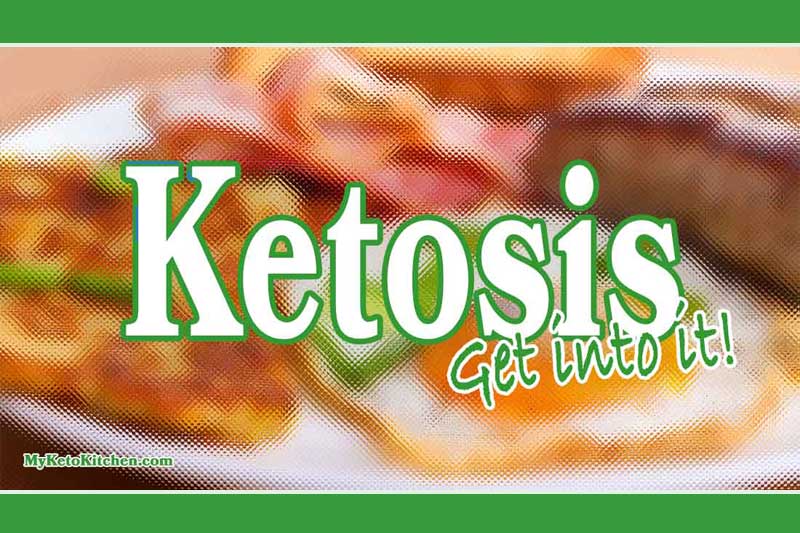
Initially, to induce ketosis in the shortest period of time, it is recommended to stay under 5% of carbohydrates per day or, to make it easy, under 20 grams.
The Ketogenic diet is a high-fat diet, so you should be getting 70% to 75% of your macronutrients from healthy fats to get into ketosis fast.
All of your carbohydrates should come from green leafy, cruciferous vegetables.
Once you’ve achieved ketosis, you can increase your protein slightly. But your protein should not exceed 25% of your daily calorie intake.
Taking certain measures can enhance how quick you get into ketosis dramatically.
Planning and preparation are critical. The following methods have been proven to achieve ketosis fast:
Very low carbohydrate intake is essential to get into ketosis fast
Keeping your carbohydrates under 20 grams per day is the best way to get into ketosis fast.
The very core of ketosis is making your body produce blood ketones at a level that will fuel your body and brain.
You will not achieve ketosis if your carbohydrate intake prevents your body from producing ketones.
It’s important to know the difference between carbs, net carbs, sugar, and fiber.
- On a nutrition label Carbs (Total carbs) means fiber and sugar carbs combined.
- Net Carbs equals the total carb minus fiber (Net carbs are what LCHF diets count)
Eat green cruciferous vegetables
When trying to get into ketosis, all carbohydrates should come from green, leafy, cruciferous vegetables, cauliflower, broccoli, spinach, etc.
While these types of vegetables have virtually no fat, they have plenty of fiber and essential nutrients, which help digestion.
The carbs that you’ll get from these vegetables will mostly be dietary fiber (net carbs are low) and should fit in nicely with your daily keto macros.
Proven Methods For Getting Into Ketosis Fast
More on each method further down the page.
- Don’t eat too much protein.
- Eating fat at 75% of your macros will get you to ketosis faster than 70%.
- Eat a variety of different fats.
- Eliminate milk and low-fat dairy.
- If you must sweeten, use natural sugar substitutes.
- Intermittent fasting.
- Using exogenous ketones.
- Using coconut oil.
- Exercise.
Protein And Ketosis
Yes, Protein is required for muscle retention, but too much protein on a keto diet can prevent you from entering ketosis.
Keep protein to 25% maximum of your fat, protein, carbohydrate macronutrient ratios.
We wrote an “important” in-depth article about why too much protein is bad for ketosis here.
We have used low-carb protein powders in fat bomb recipes, but most of the ingredients are from fats.
We now prefer Collagen Protein with MCT’s for its ketone inducing properties.
Collagen protein not only gives you energy it also supports healthy skin, ligaments, hair, and nails and is a good balance of amino acids.
Eating Fat at 75% of your macros will get you to ketosis faster than 70%
Ensure the good majority of your calorie intake comes from fat. Your body burning fat is how you get into ketosis.
Once you’ve achieved ketosis, you can adjust your macros toward 70% fat. Make sure to avoid hydrolyzed trans fats.
Increase protein slightly for muscle sparing as you become more active.
But your diet should consist of no more than 25% protein (30% for athletes and heavy trainers) if you want to stay in ketosis.
Eat a variety of different fats for a better ketosis experience
It is essential that you get your fats from a variety of food sources when trying to get into ketosis.
Get your fats from butter (from grass-fed cows is better), extra virgin coconut oil (non-hydrolyzed), oily fish such as salmon and sardines, MCT oil (and MCT Powder ), and nut oils.
Not all MCT oils are the same we wrote about what and which is best here.
The ideal high-temperature cooking oils for deep frying are lard and tallow.
Coconut oil makes a great shallow frying oil.
Eliminate milk and low-fat dairy
To get into ketosis fast, you’ll need to drop all milk and low-fat dairy from your diet.
Replace milk in your coffee with a dash of heavy/full cream, or drink it black.
Instead, try MCT Powder, as it makes an excellent crema and gives you a boost from the fast-absorbed fatty acids.
Milk has too many carbs and will prevent you from getting into ketosis fast.
If you must sweeten, use natural sugar substitutes to stay in Ketosis
It’s a given that on a Keto diet, you won’t get into ketosis if you’re eating sugar.
Use natural sweeteners such as Erythritol, Stevia, and Xylitol in place of sugar. There are also a few blended products on the market that make natural sweeteners more palatable.
Blends such as Natvia and Swerve read about them in the link in the paragraph above.
We find Xylitol to be the closest thing to sugar, just be aware that too much xylitol can give some people stomach upsets.
Alternatively, Stevia has its place in cooking but has an aftertaste that is evident in tea or coffee.
Intermittent Fasting And Ketosis
Yes, intermittent fasting can make a significant difference in getting into ketosis fast due to the quick depletion of glycogen, forcing the body to turn to fat for fuel and producing ketone bodies.
Before embarking on such diet restrictions as intermittent fasting, you must consult your doctor, especially if you suffer from any ailments.
Intermittent fasting helps your body turn to fat for fuel and get into ketosis at a rapid rate.
Read our article on intermittent fasting and ketosis here.
Using Exogenous Ketones Kick Starts Ketosis Faster
Exogenous is a term that means taking from an external source. Consuming exogenous ketones gives an almost instant boost in blood ketone levels.
The exogenous ketones you’ll mostly be interested in for getting into ketosis are C8 MCT Oil and BHB Salts.
These keto supplements are readily available and will help you get into ketosis faster than any other.
After taking BHB salts, you will notice an increase in energy and focus. Other than ketone esters, ketone salts are the only other direct way of taking ketones. (Oils are converted to ketones). Athletes and dieters use them with great success.
Use Coconut Oil To Get Into Ketosis
Coconut oil consumed at 1-3 tablespoons three times a day has been shown to bring about ketosis quicker than just a high-fat diet.
This is due to the way medium-chain triglycerides (MCTs) are processed in our bodies.
High-quality MCT oil is made from Coconut Oil. Coconut oil also has hunger-blunting effects.
Use only extra virgin, cold-pressed coconut oil as it has a broader spectrum of fatty acids and other health benefits.
Coconut oil contains lauric acid, which is helpful in fighting infections, colds, flu, and other nasties.
Coconut oil also has many uses in the kitchen as it has a high smoke point for frying.
Not only does coconut oil help you get into ketosis fast it also has a tonne of uses as a beauty product for hair and skin. Use coconut oil for shallow frying as it does not oxidize readily.
Keep coconut oil on hand for frying and fat bomb recipes, and use MCT Oil for fast ketone production.
There is no doubt the lower your carbohydrate consumption, the sooner your body stops relying on glucose as fuel. When that happens, your body turns to fat as fuel through ketosis.
Exercise And Ketosis
Yes. Exercising helps you get into ketosis faster by using up the body’s preferred fuel source (carbohydrates) first so that you can get into a fat-burning state quicker.
Your body will always use carbohydrates as a source of energy first and only turns to fat when carbs are depleted.
This is due to the fact that your body does not have to work as hard to burn carbohydrates.
Exercise helps you deplete the glycogen in your body from the conversion of carbohydrates.
Once your glycogen stores are depleted, your body will turn to fat for energy and begin the process of ketosis.
The best type of exercise for fat-burning and achieving ketosis is slow and lengthy.
A long brisk walk will serve you much better for fat loss than a sprint.
- Just start walking for those not used to exercise.
- Resistance training is excellent, but it can come later if you feel the urge.
- Just a slight change in activity will have a tremendous effect on burning off those last remnants of glucose.
A Healthy Tip: Nobody is asking or wanting you to be sweating and puffing like a maniac.
Don’t go running up sand dunes or piggybacking your husband to work.
If you’re not accustomed to exercising, just walk! Get a Fitbit to track your progress and start with small tasks, slowly increasing as it becomes easier.
Walking is an excellent way to stay in the fat-burning zone without chewing into your body’s lean muscle mass.
This is very important. If you don’t usually exercise, start with baby steps. Just get moving, walk a little, then walk a little further or a little faster as you become accustomed to it.
If you get into exercise this way, you will learn to love it, and it will stoke your metabolism nicely, reducing the time to get into ketosis.
On the other hand, if you get into exercising like a bull at a gate. As seen on some TV shows or by novice personal trainers.
You will not only put yourself at serious health risks; you will learn to associate exercise with pain. You’ll know why you hated exercising in the first place.
I have seen personal trainers with clients in their first session train them harder than athletes. Those clients never return, and they wonder why.
Learn to love exercise one step at a time, fitness is as much psychological as it is physical.
The best way to tell if you’re in ketosis is by measuring ketone bodies in the blood via blood glucose and a ketone meter commonly used by people with diabetes.
You can tell whether or not you are in ketosis by monitoring your ketone levels with a ketone meter.
There are various devices that work in different ways.
These ketone meters have the added benefit of storing and tracking your progress into ketosis from day to day as well.
The most common method of how to know if you’re in ketosis is by way of Ketostix.
While they are affordable and easy to use Ketostix are most often inaccurate and may not indicate whether you’re in ketosis when you actually are.
Ketostix are thin strips of paper that have an indicator in them. The indicator changes color when entered into a person’s urine. Indicating ketone bodies that tell you when you’re in ketosis.
A ketone meter is by far a better option to measure whether you’re in ketosis or not.
Signs That You Are In Ketosis
- Keto Breath: You (or others) may notice a fruity acetone-type smelling breath. Easily combated with; sugar-free mints, sugar-free gum, etc., if you’re someone that is concerned with artificial sweeteners. The best-tasting gum that we’ve found with no sugar is sweetened with natural Xylitol and it won’t throw you out of ketosis. Ps Xylitol has also been used successfully in treating and preventing middle ear infections. Just go easy as it does upset some people’s stomachs in large amounts. Treat Keto Breath as a good sign as the smell is easily dealt with.
- Frequent urination as your body expels the excess fluid that it was hanging onto due to the number of carbohydrates that you previously consumed.
- Possible fatigue or what is known as keto flu can be tackled by consuming more electrolytes, which you can get from high mineral-containing bone broths.
- And the most exciting part. A rapid drop in weight. Just be aware that the fast weight loss you notice in the first few weeks of ketosis is mostly fluid. Fat loss will be steady yet still very noticeable.
Ketosis and Weight Loss
When you get to 3 or 4 weeks, your actual weight (if you insist on using scales) may not be as significant as compared to someone who starves themselves on a calorie-restricted diet.
The reason your weight loss may seem to have stalled in ketosis is that you are retaining lean muscle mass. This is due to keeping up your high fat and moderate protein intake. Fat loss is now your main concern, not weight loss.
Those on a calorie-restricted diet, due to limiting everything, have no such nutrients to maintain valuable muscle. They lose weight everywhere, not just fat.
This is why you see people who partake in such harmful nutrient restricting diets become weak, gaunt and unhealthy looking. While those that stay healthy, through ketosis, are lean and muscular.
It is also why I highly recommend that you ditch the scales for measurements with much cheaper measuring tapes and weekly progress photos. Muscle is heavy, people, the kind of heavy you want.
For the Ladies: You shouldn’t fear turning masculine. You’ll simply be retaining the lean mass you have. It will give you shape as the fat melts rather than the deflated look many achieve on an extremely calorie-restricted diet.
This won’t pack on massive forearms or biceps. Though being in ketosis can be worked into a bodybuilding routine. For which you’ll tweak protein and calorie intake “if you choose.” But only once you’ve removed the excess fat from your frame.
Products to Help You Get Into Ketosis Fast
There are few products that can raise ketone levels fast and measure whether you’re in ketosis or not. We recommend that you use only products that have no fillers or nasty additives.
- BHB Salts – This will get your ketone levels high fast.
- MCT Powder – Also boosts ketone levels rapidly and makes an excellent Crema for Coffee (supercharging your coffee).
- Ketone Meter – Know your blood ketone levels in real time! We are big fans of monitoring and tracking.
- MCT Oil – Works faster than MCT powder but is not as convenient. Keep it in the fridge and start with a tablespoon when in need of some energy. Or when your ketone monitor says you’re low on ketones.
Resources:
- On the Metabolism of Exogenous Ketones in Humans – Oxford University.
- Effects of exogenous ketone supplementation on blood ketone, glucose, triglyceride, and lipoprotein levels on Sprague- Dawley rats.
- The use of nutritional supplements to induce ketosis and reduce symptoms associated with keto-induction: a narrative review.
Note: Always consult a medical professional (in person) before embarking on drastic dietary changes or trying to achieve ketosis.
The Ketogenic Diet isn’t hard, and getting into ketosis won’t take long when you learn to read nutrition labels.
Follow these rules, calculate your macros using a keto calculator, and you certainly won’t starve.
It takes between one and ten days to get into ketosis if you stick to the ketogenic diet and do it properly.
The exact time it takes to get into ketosis depends on prior nutrition, the individual’s metabolism, and other factors such as supplements and fasting.
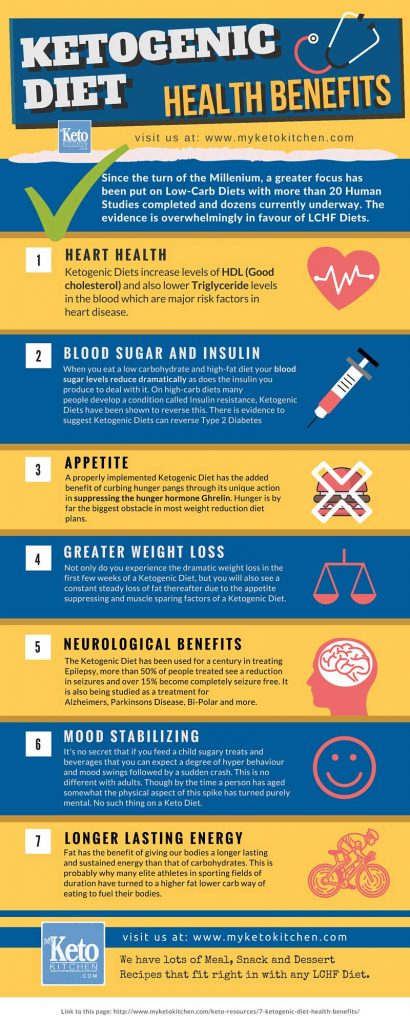
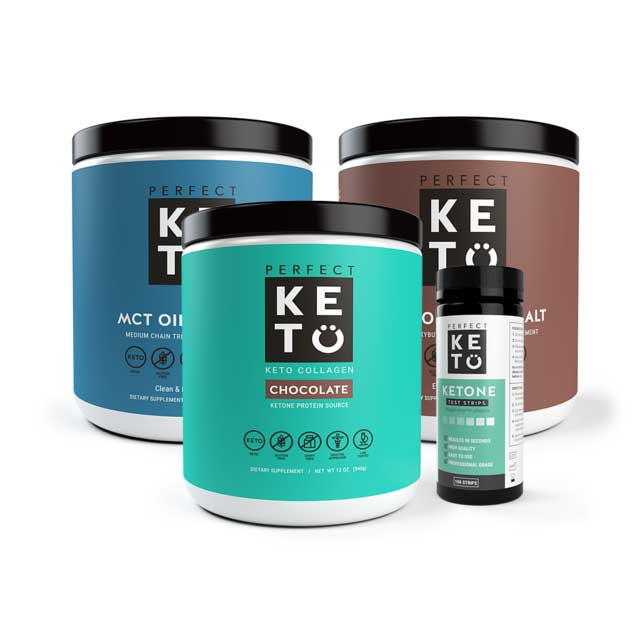




Why stay away from protein powders that are low in carbs? I mix with a cup of no add sweetner coconut milk. Not good?
Hi Joanne,
We recommend getting all your protein from your meals. Too much protein can kick a person out of ketosis, so we don’t recommend using protein powders initially to get into ketosis.
Gerri
Is it possible to urinate so much that you do not achieve Ketosis, or the Ketostix do not register? I drink over a gallon of water daily, and do not get much exercise at all. My Ketostix register “negative and trace”. I used to drink sweet tea all day, now I’ve switched to MIO water enhancers. I really enjoy them and drink those all day.
Hi Anita,
Ketostix can be very unreliable with their readings and there are many more factors involved with testing.
– Drinking lots of water can dilute your urine, but it won’t stop you from achieving ketosis.
– Your body could be using ketones so efficiently that there are only trace ketones are passed into your urine.
– You could be fat-adapted. In some people, after becoming fat-adapted, ketones are only present in the blood.
– You might be eating too many carbs for your body and not be in ketosis.
We’re not doctors, so it is best to contact your health professional for accurate information.
Gerri
Thank you Gerri,
I’ve been lead to believe that once you become fat adapted that your body uses fat for energy as opposed to glucose, ie, losing weight. This is my 2nd attempt at Ketosis! Both times I lose weight for the first couple of weeks, then start putting it back on! This time lost 7 pounds in 2 weeks, now 3rd week (no cheating) regaining 4! I just don’t understand! I know your not Dr.’s but I do appreciate the input, as I’m struggling to understand this… again thank you!
I had a question regarding a ketogenic diet for someone who bodybuilds 4 times a week. I do not want to lose muscle but still gain muscle in the process. What should my macro percentages be on the ketogenic diet? thanks!
Hi Carolina,
Have you used our Keto Calculator? There is an option on it for muscle gain, just type in your details and it will do the hard work 🙂
Gerri
4.5